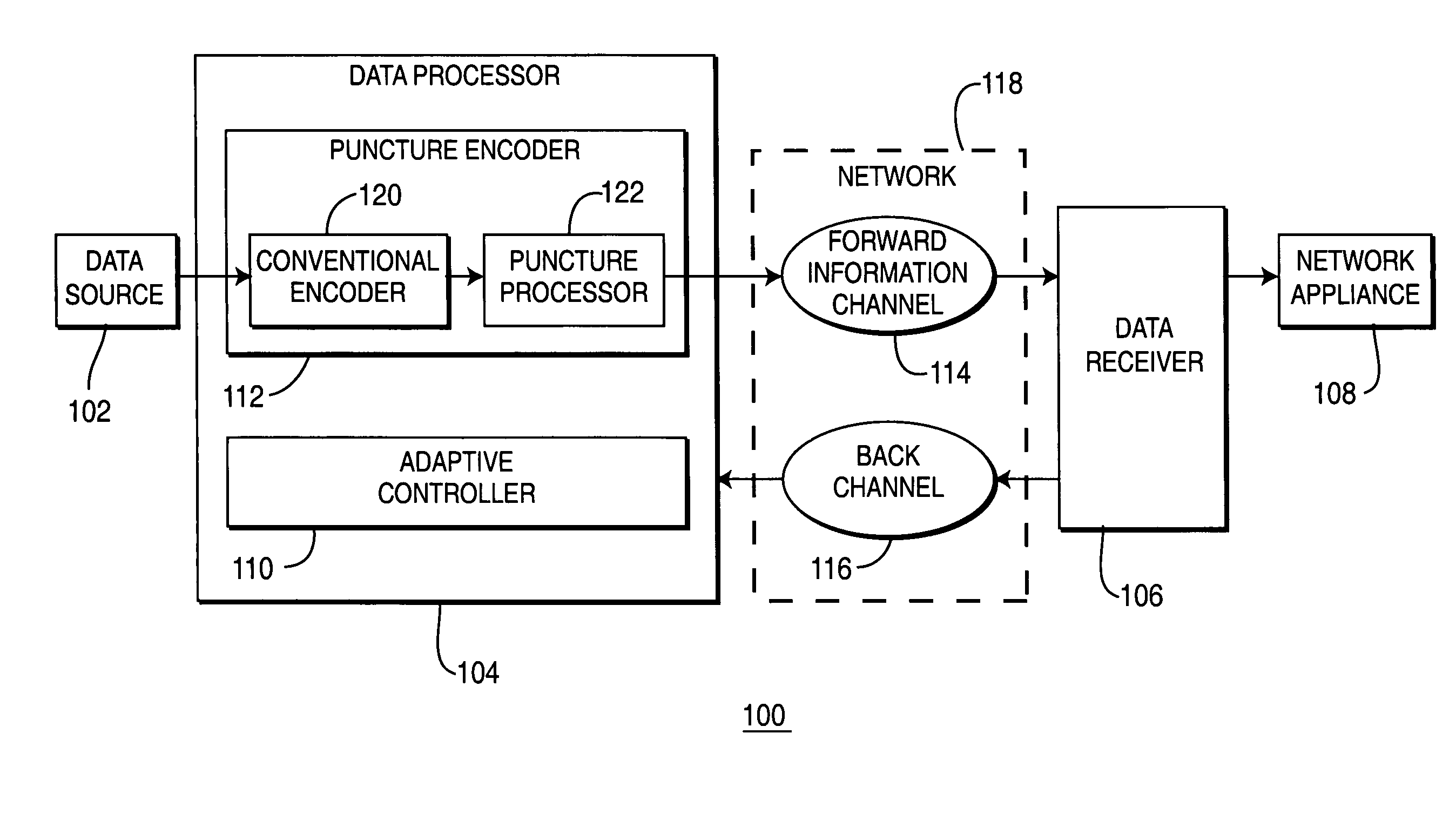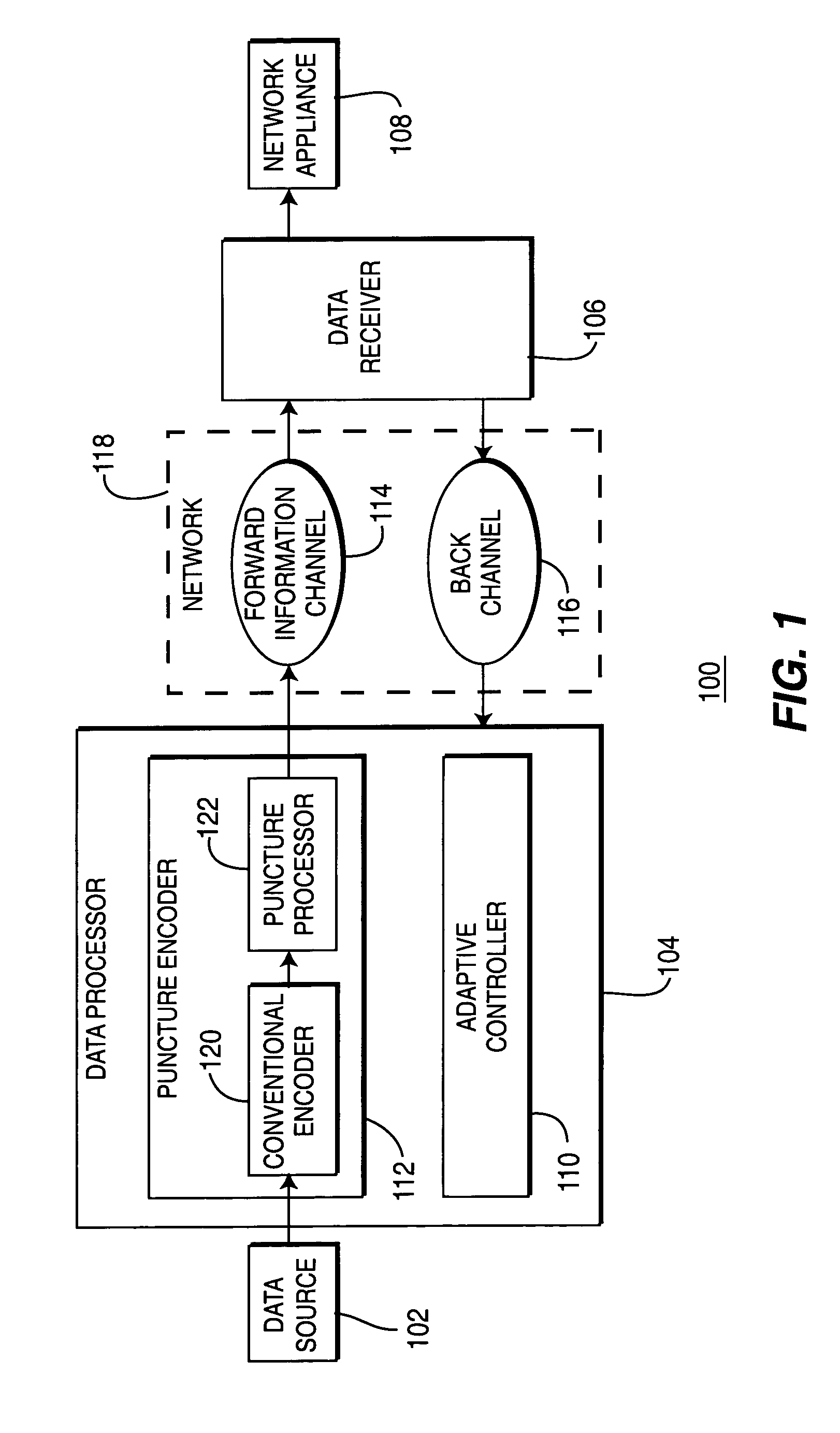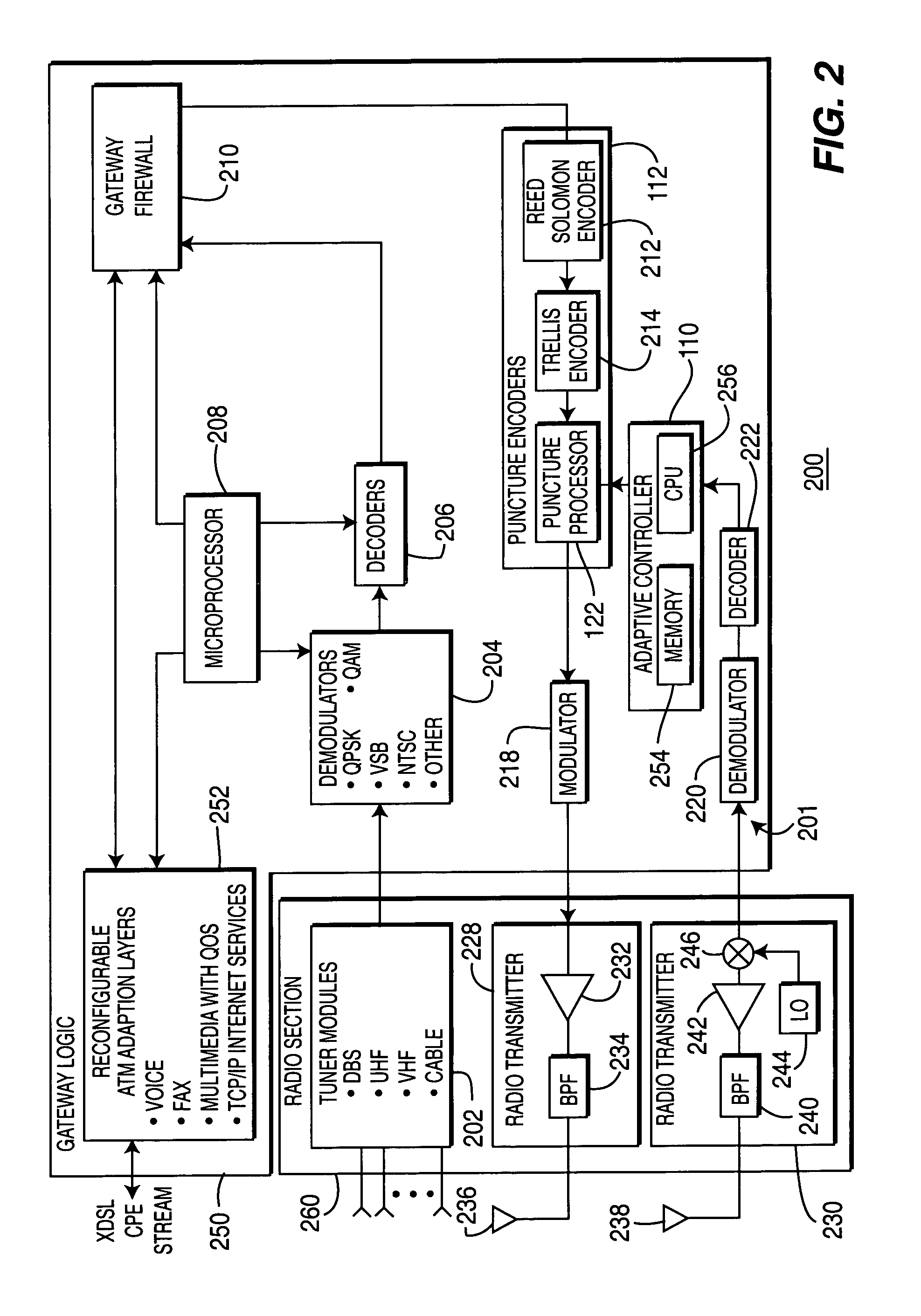Method and apparatus for adaptively coding a data signal
a data signal and adaptive coding technology, applied in the direction of coding, channel coding adaptation, code conversion, etc., can solve the problems of data signal transmission over a communication network, receivers may either erroneously decode the received signal or require retransmission of data signal
- Summary
- Abstract
- Description
- Claims
- Application Information
AI Technical Summary
Benefits of technology
Problems solved by technology
Method used
Image
Examples
Embodiment Construction
[0012]FIG. 1 depicts a block diagram of a data communications system 100. In accordance with the present invention, the data communications system 100 uses a novel adaptive puncture coding method to transmit a data signal over an information channel 114. Specifically, the system 100 comprises a data source 102, a data transmitter 104, a data receiver 106 and a network appliance 108. Transmission of data signals and control signals between the data transmitter 104 and the data receiver 106 occurs over a network 118 comprising a forward information channel 114 and a back channel 116.
[0013]The data source 102 provides a data signal or any type of information that is coupled to the data transmitter 104 and transmitted through the forward information channel 114 of the network 118. Examples of the data source 102 include a cable feed, a xDSL (digital subscriber line) feed, a POTS (plain old telephone system) feed, a satellite television feed, an over-the-air television antenna, and the l...
PUM
 Login to View More
Login to View More Abstract
Description
Claims
Application Information
 Login to View More
Login to View More - R&D
- Intellectual Property
- Life Sciences
- Materials
- Tech Scout
- Unparalleled Data Quality
- Higher Quality Content
- 60% Fewer Hallucinations
Browse by: Latest US Patents, China's latest patents, Technical Efficacy Thesaurus, Application Domain, Technology Topic, Popular Technical Reports.
© 2025 PatSnap. All rights reserved.Legal|Privacy policy|Modern Slavery Act Transparency Statement|Sitemap|About US| Contact US: help@patsnap.com



